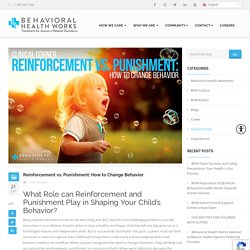

Three stages of development. Emotional and Social Development in Adolescence. What you’ll learn to do: describe adolescent identity development and social influences on development Adolescence is a period of personal and social identity formation, in which different roles, behaviors, and ideologies are explored.

In the United States, adolescence is seen as a time to develop independence from parents while remaining connected to them. Some key points related to social development during adolescence include the following: Adolescence is the period of life known for the formation of personal and social identity.Adolescents must explore, test limits, become autonomous, and commit to an identity, or sense of self.Erik Erikson referred to the task of the adolescent as one of identity versus role confusion. Thus, in Erikson’s view, an adolescent’s main questions are “Who am I?” Learning outcomes Identity Formation Psychosocial Development Identity Development Figure 1. Identity development is a stage in the adolescent life cycle. Self-Concept Self-Esteem Figure 2. WAtch It. Teens behaviour. Guide to understanding teenagers. Paul Lewis: How to connect with a teenager. Zahra Dry: Reshaping how we see Identity. Brian Ge: Rethinking Parenting - Regarding the Parent-Teen Dynamic.
Have You Talked With Your Teen Today? : Parenting 24/7. Posted , updated Feb 09, 2006.

Does my child care what I think? Your child probably cares a great deal about what you think. You play an important role in shaping your teenager’s behavior. Teens who say their parents warned them about drug use and set clear rules are less likely to use drugs. Parents’ and teenagers’ morals, future aspirations, and self-control are typically quite similar. What kinds of things do teenagers want to talk about? Generally, teenagers are interested in the following conversations: Family issues Teens want to participate in decisions and be told about family problems.
Controversial issues Teens have questions like “What does sex feel like?” Emotional concerns Teens want to know how you really feel about things. The big whys Teens begin to have philosophical questions about issues like war and religion. The future Teens are curious and concerned about what they can expect from the future.
How can I talk with my teen? The 4 Element of Influencing Behaviour. Discipline strategies for teenagers. Teenage discipline: the basics Discipline isn’t about punishment.

It’s about teaching children appropriate ways to behave. For teenagers, discipline is about agreeing on and setting appropriate limits and helping them behave within those limits. When your child was younger, you probably used a range of discipline strategies to teach him the basics of good behaviour. Now your child is growing into a teenager, you can use limits and boundaries to help him learn independence, take responsibility for his behaviour and its outcomes, and solve problems. Your child needs these skills to become a young adult with her own standards for appropriate behaviour and respect for others. Teenagers don’t yet have all the skills they need to make all their own decisions, so the limits you agree on for behaviour are an important influence on your child. Teenage discipline is most effective when you: Negotiation is a key part of communicating with teenagers and can help avoid problems.
Agreeing on clear limits. Reinforcement vs. Punishment: Changing Behavior. Being a parent has been known as the best thing ever BUT also the most challenging endeavor you will encounter in your lifetime.

Parents strive to raise a healthy and happy child that will one day grow up as a full-fledged mature and independent adult. But to successfully accomplish this goal, a parent must set forth structure or rules throughout their childhood to help them understand and be realigned when their behavior needs to be modified. When a parent recognizes the need to change a behavior, they will likely end up using either reinforcement, punishment, or a mixture of both.
When we’re helping to decrease the frequency of a child’s negative behavior, having the reinforcement or punishment methods in our toolkit can help you modify and implement the desired behavior. How does Reinforcement help with changing behavior? There are two basic kinds of reinforcement, positive and negative reinforcement. The role of Punishment in making behavioral changes. Skinner’s Operant Conditioning: Rewards & Punishments. Reward vs punishment. New perspectives on adolescent motivated behavior: Attention and conditioning. Parenting Practices and Children's Education Outcomes.